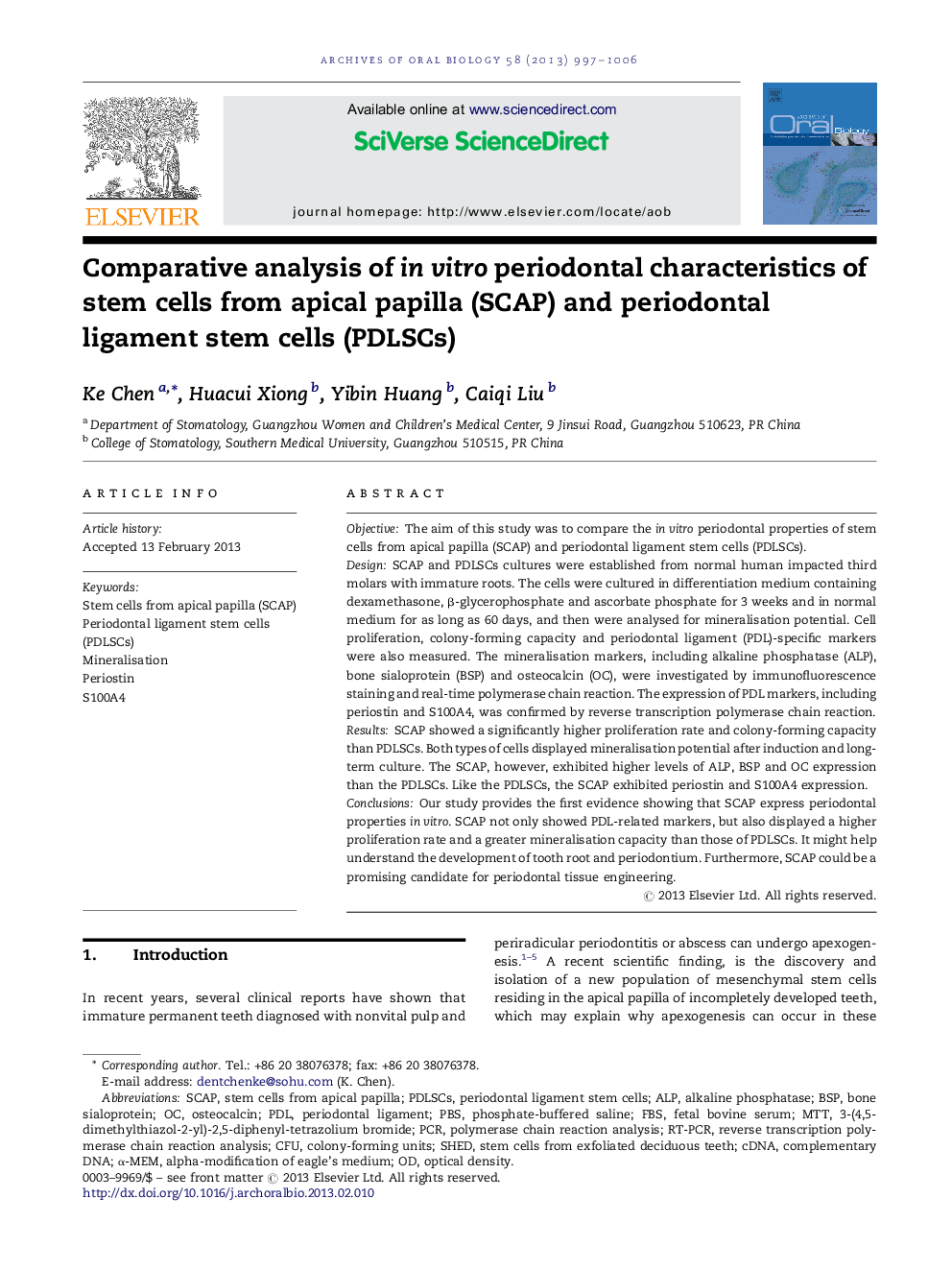| Article ID | Journal | Published Year | Pages | File Type |
|---|---|---|---|---|
| 3121091 | Archives of Oral Biology | 2013 | 10 Pages |
ObjectiveThe aim of this study was to compare the in vitro periodontal properties of stem cells from apical papilla (SCAP) and periodontal ligament stem cells (PDLSCs).DesignSCAP and PDLSCs cultures were established from normal human impacted third molars with immature roots. The cells were cultured in differentiation medium containing dexamethasone, ß-glycerophosphate and ascorbate phosphate for 3 weeks and in normal medium for as long as 60 days, and then were analysed for mineralisation potential. Cell proliferation, colony-forming capacity and periodontal ligament (PDL)-specific markers were also measured. The mineralisation markers, including alkaline phosphatase (ALP), bone sialoprotein (BSP) and osteocalcin (OC), were investigated by immunofluorescence staining and real-time polymerase chain reaction. The expression of PDL markers, including periostin and S100A4, was confirmed by reverse transcription polymerase chain reaction.ResultsSCAP showed a significantly higher proliferation rate and colony-forming capacity than PDLSCs. Both types of cells displayed mineralisation potential after induction and long-term culture. The SCAP, however, exhibited higher levels of ALP, BSP and OC expression than the PDLSCs. Like the PDLSCs, the SCAP exhibited periostin and S100A4 expression.ConclusionsOur study provides the first evidence showing that SCAP express periodontal properties in vitro. SCAP not only showed PDL-related markers, but also displayed a higher proliferation rate and a greater mineralisation capacity than those of PDLSCs. It might help understand the development of tooth root and periodontium. Furthermore, SCAP could be a promising candidate for periodontal tissue engineering.
